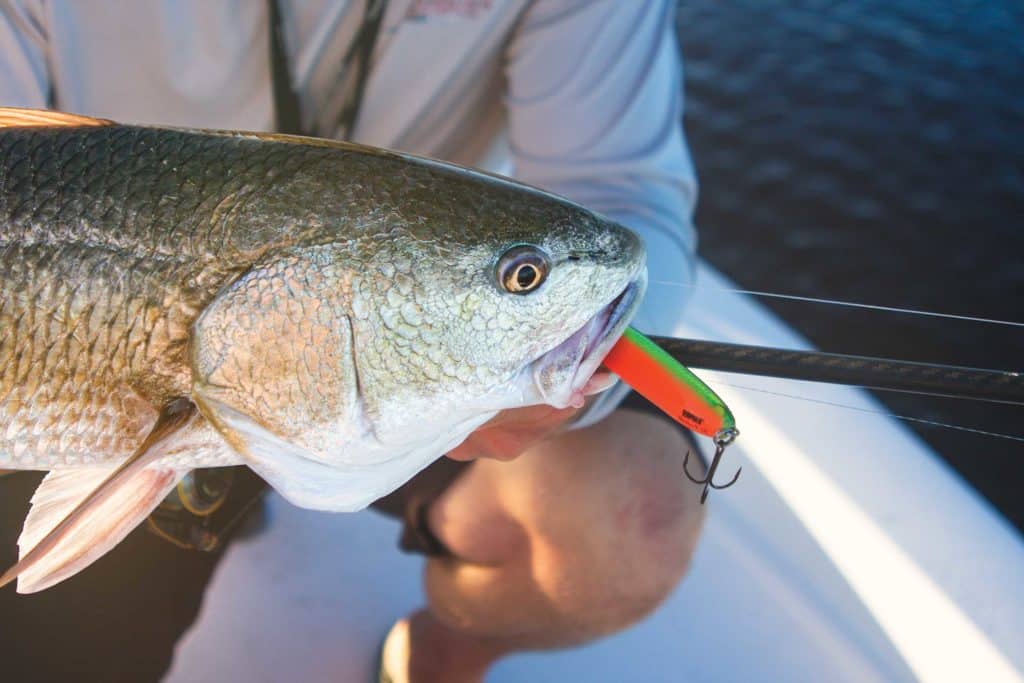
The bone-colored plug was darting and snapping like a Spanish flamenco dancer across the surface of the water when a copper torpedo blasted it, launching itself and the lure a foot into the air. A second attack ensued as the topwater splashed down, but it was another near-miss, and just as suddenly as the redfish had disrupted the calm of the morning, it was gone.
“That was awesome,” Capt. Jake Kight said as I stood on the bow of his bay boat, staring in disbelief at the spartina grass shoreline, scene of the brief encounter. “I don’t think I ever saw a redfish go airborne on a plug like that, and he did it twice! I’ll be stocking up on those bone Skitter Walks.”
Kight and I were in our second day of exploring Bogue Sound and the White Oak River, near Swansboro and Emerald Isle, North Carolina.
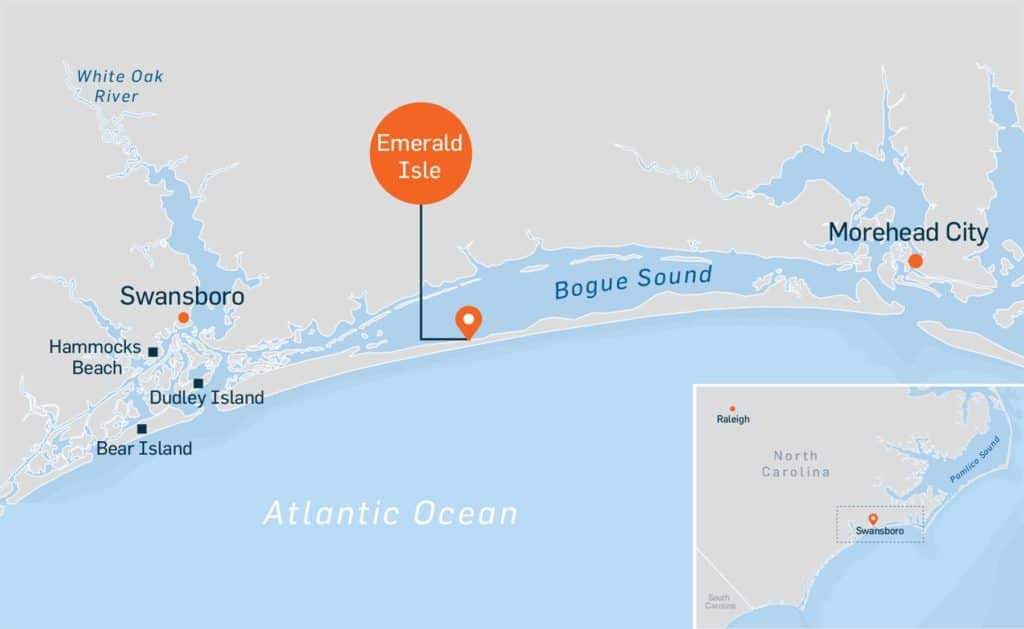
World-class bull reds in Pamlico Sound and the Outer Banks get most of the publicity in the Tar Heel State, but many of those fish get their start in the marshes and backwaters. Kight, who has been guiding for six years, targets them with a variety of baits, although topwater action is his favorite.
Minutes before my close call, Kight successfully released a spunky red that stayed buttoned to his surface plug.
Hotspots and Peaks
The waters of Bogue Sound, the Intracoastal Waterway, and spots like Hammocks Beach State Park and adjacent Bear, Dudley and James islands offer a vast maze of shell and sand spits, tidal sloughs and channels where redfish, from juvenile “puppy drum” to adults in the 30-inch range, hold in 2 to 3 feet of water. Many are year-round residents, Kight explains, and while water clarity during winter and spring makes them easier to sight-fish, June and July, when the reds are still schooling but mullet haven’t yet gotten too thick, are the best months to catch them on top.
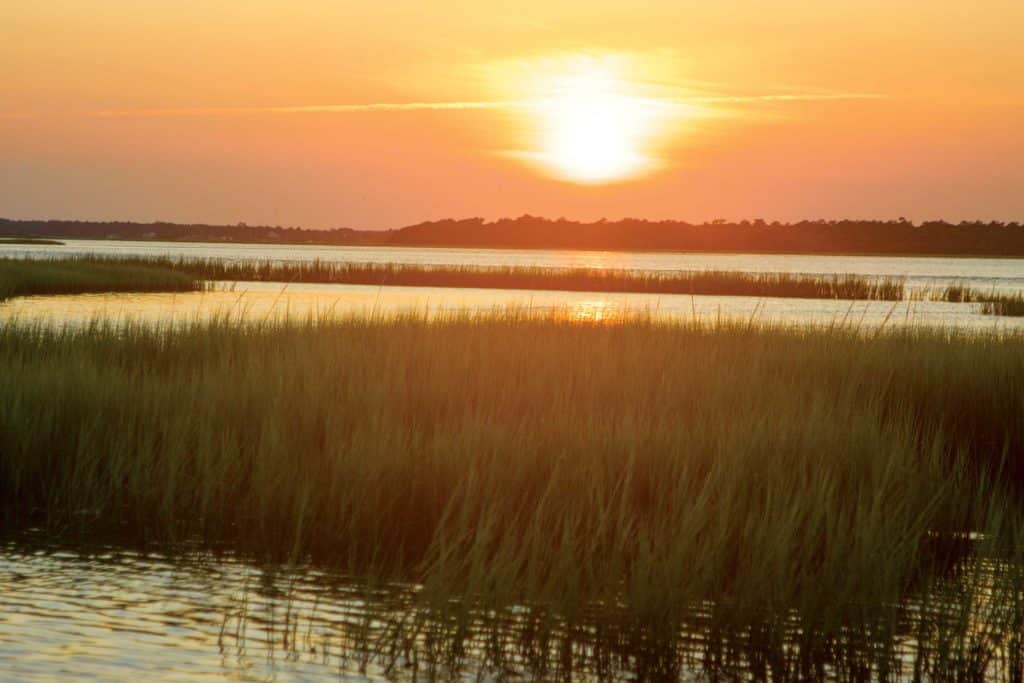
Kight says he prefers the start of the falling tide to cast topwaters. “That’s when the fish home in on the bait as it starts coming off the marsh grass. I focus on pinch points, bars and drop-offs. I know they call them channel bass, but I have better luck in the back eddies and behind marsh patches. There are blue crabs or concentrations of shrimp there, plus less current, so the reds don’t have to work as hard.” Flats and oyster bars close to the inlets become hotspots in autumn as the bigger fish move in and gorge on schools of mullet and menhaden, he says.
Search and Approach
Combining the trolling motor and Power-Pole anchoring system, we eased among the sand shoals and shallow channels, watching for nervous water, boils and other signs of feeding activity. “It took me a while to really learn the marsh,” Kight says. “The best way is on low tide, which gives you the chance to see the bottom, the drop-offs and bars, and really find where the fish will be holding. I go up to a spot, jack the motor up and ease over it. If I can do that at idle, I can do it on plane. But you have to know what your boat can do. Getting through tight spots is a fun challenge, but you have to read the water surface, find where it’s smooth to identify channels, and run around all the hazards in the marsh.”
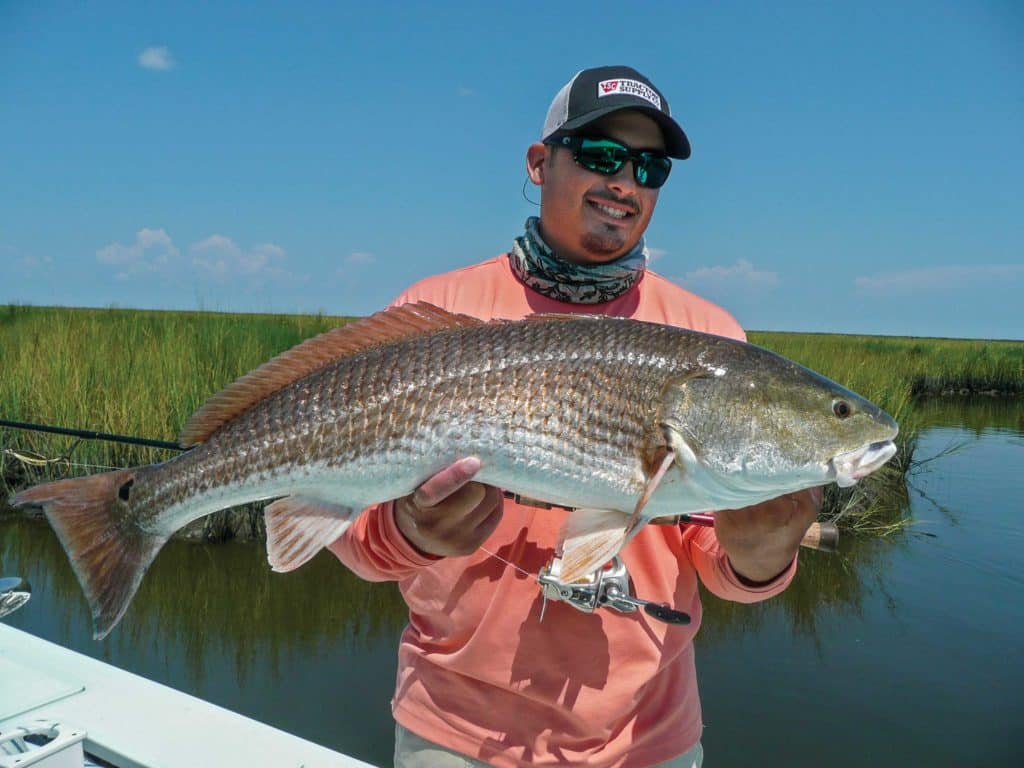
The lower tidally influenced portions of the White Oak River hold reds along flooded shorelines and coves. Several marinas and ramps in the Swansboro and Emerald Isle area provide access to prime water, but most of it requires flats or bay boats with shallow drafts.
Arsenal and Tactics
Kight likes darker, contrasting patterns in his plugs, and has developed a fondness for the Rapala Skitter V series. He feels the V-shaped keel makes the lure flash better to attract attention. He ties on all his plugs with a Canoe Man loop knot to impart the most action. The reverse tag left on the end of the knot also sheds floating grass easier.
When fishing for marsh reds with clients, especially those with limited experience, Kight typically uses Gulp! shrimp (white with chartreuse tails) pinned on 1/8-ounce jig heads. Weedless spoons and spinnerbaits are also effective to locate fish. In late summer and fall, he opts for large menhaden cut into chunks or live finger mullet rigged with a snelled light-wire 1/0 to 3/0 circle hook, which, besides redfish, produces good numbers of flounder.
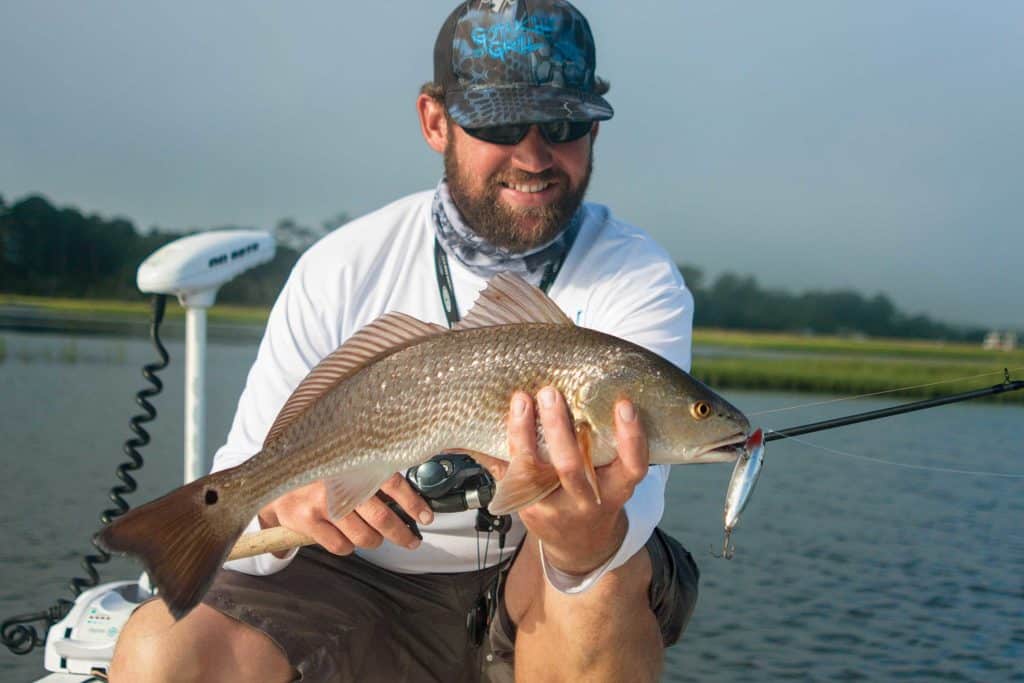
“Fishing the marshes is a learning process,” he says. “Before I’m done, I’ll know everything about what makes the redfish tick. But all you really need to do is watch the crabs move.”
Double-digit tallies of slot-size redfish, legal keepers between 18 and 27 inches, are possible anytime in Bogue Sound marshes. Like most coastal gamefish, tidal movement, water temperature and moon phases have a big influence on catch rates. With their underslung jaws, hookup ratios for redfish are lowest on surface plugs, but that doesn’t stop Kight from tying one on.
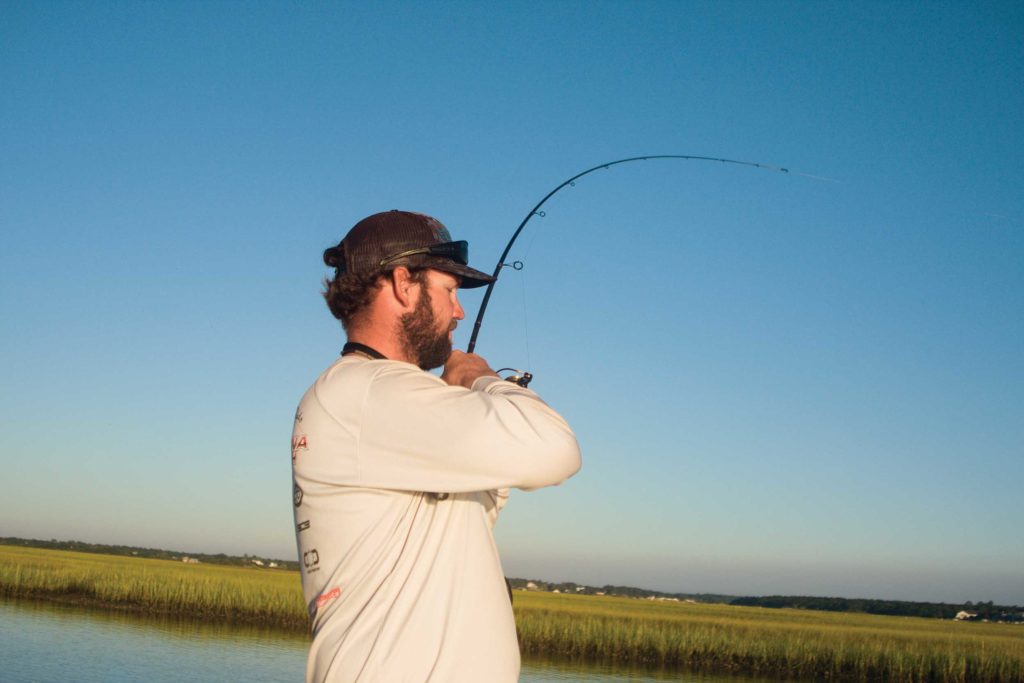
“That’s the conundrum,” he says. “These fish see a ton of mullet and cut bait. If you want to catch ’em on topwaters, you’re going to have some near-misses. But there’s nothing better than to see an upper-slot red drum hump up behind your plug and crush it.”
What
Redfish
When
Year-round
Where
Bogue Sound to Swansboro, North Carolina
Who
The following guides can put you on marsh reds and show you the ropes:
Capt. Jake Kight, 910-467-5717, inshoreaddictionchartersnc.com
Capt. Rob Koraly, 252-725-4614, sandbarsafari.com
Capt. Jonathan Garrett, 252-670-4523, onpointfishing.com
Targeting North Carolina Marsh Redfish
Rods: 7-foot, medium–action for spinning; 6 1⁄2- to 7-foot medium-light to medium action, such as Fenwick HMG or equivalent for baitcasting outfits
Reels: 3,000- to 4,000-class spinning; 200-class baitcasting
Line: 10-pound braid for both spinning and baitcasting, with 20-pound fluorocarbon leader
Bait: Live finger mullet, cut menhaden fished on Carolina rigs with snelled 1/0 to 3/0 light-wire circle hook
Lures: Rapala Skitter V and Skitter Walk, MirrOlure Top Dog, in olive-and-gold, orange, silver-and-black back, chrome-and-black, or similar topwater lures; Gulp! 3- to 4-inch shrimp rigged on Owner Twistlock worm hooks or Mister Twister jig heads
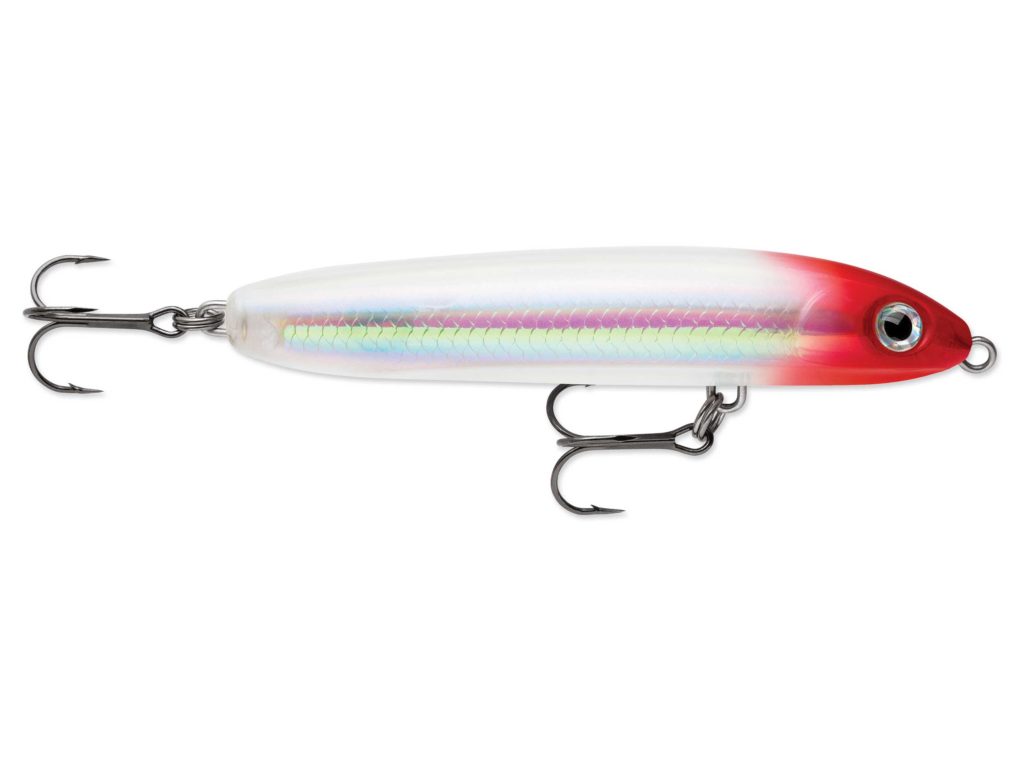
This topwater turns with the snap of the rod, then glides softly on slack line.
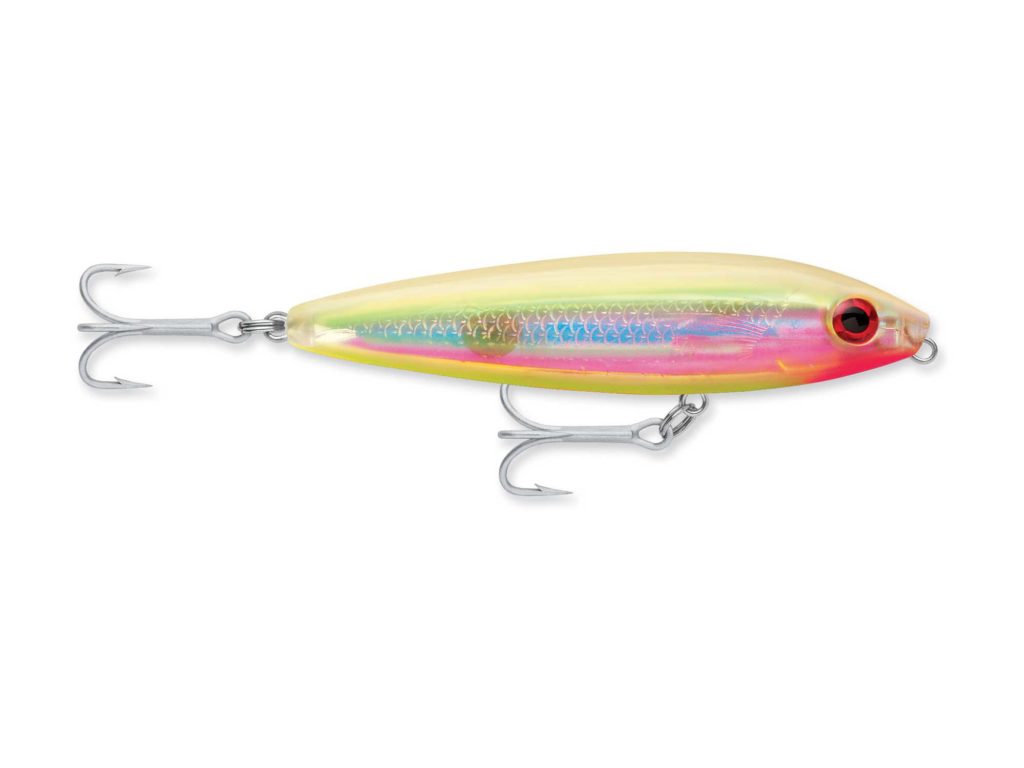
Internal rattles create a rhythmic sound and enticing side-to-side action.
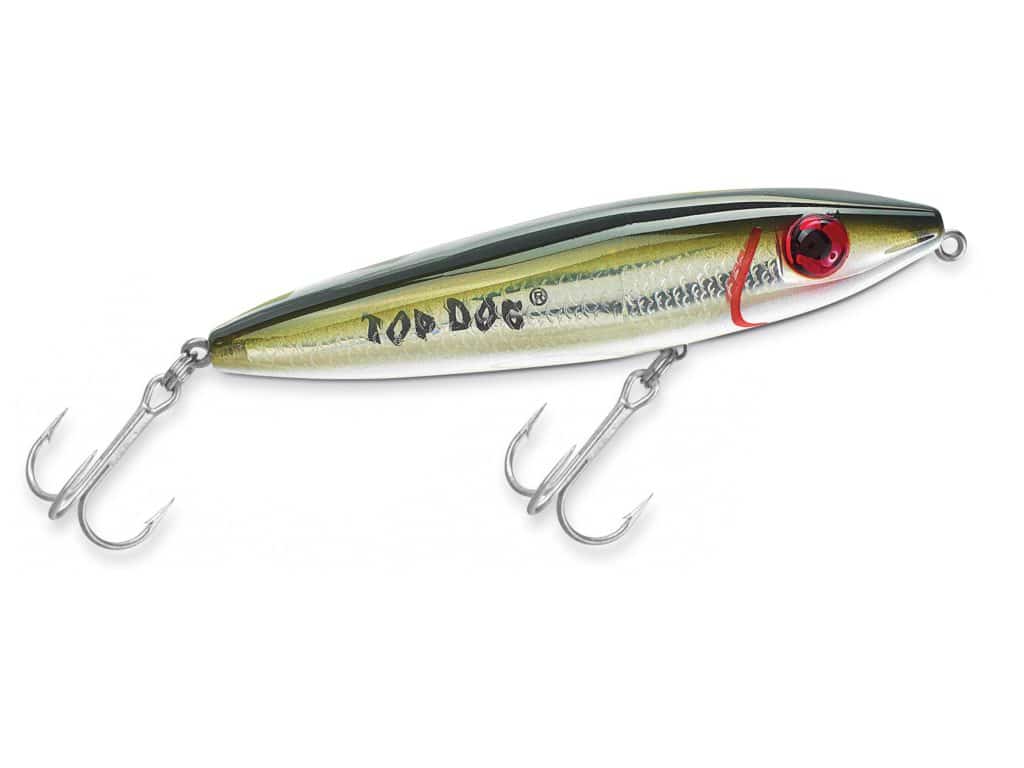
The classic walk-the-dog action and low-frequency, sonic rattles call fish and draw explosive strikes.
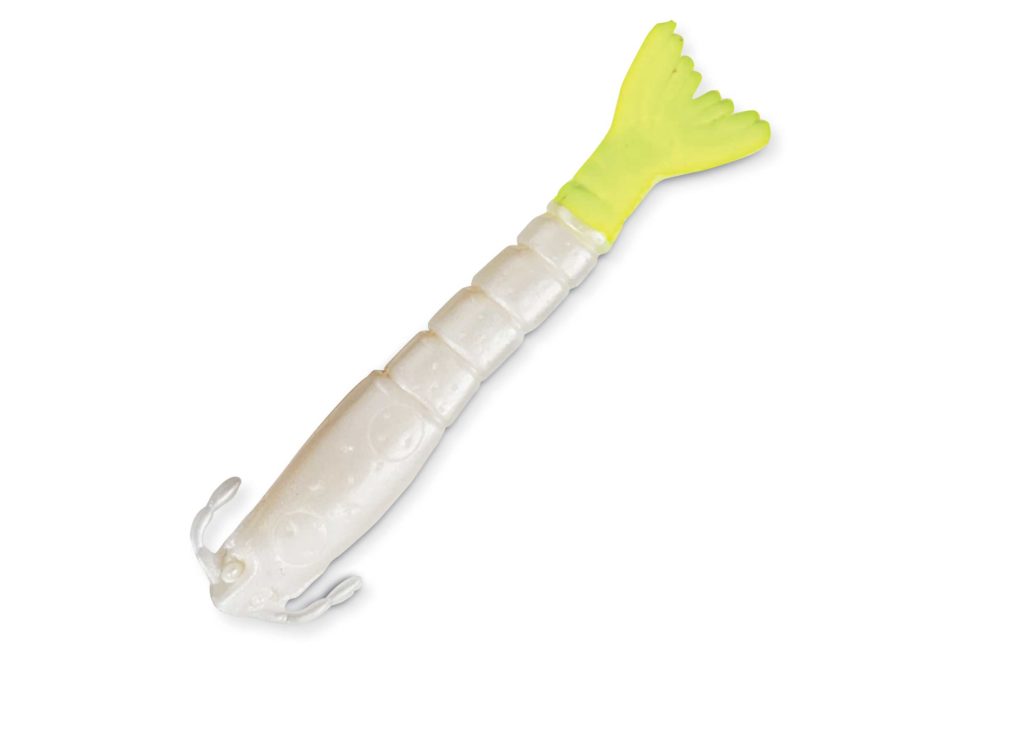
The strong scent and shrimp silhouette are a combination reds can’t resist.
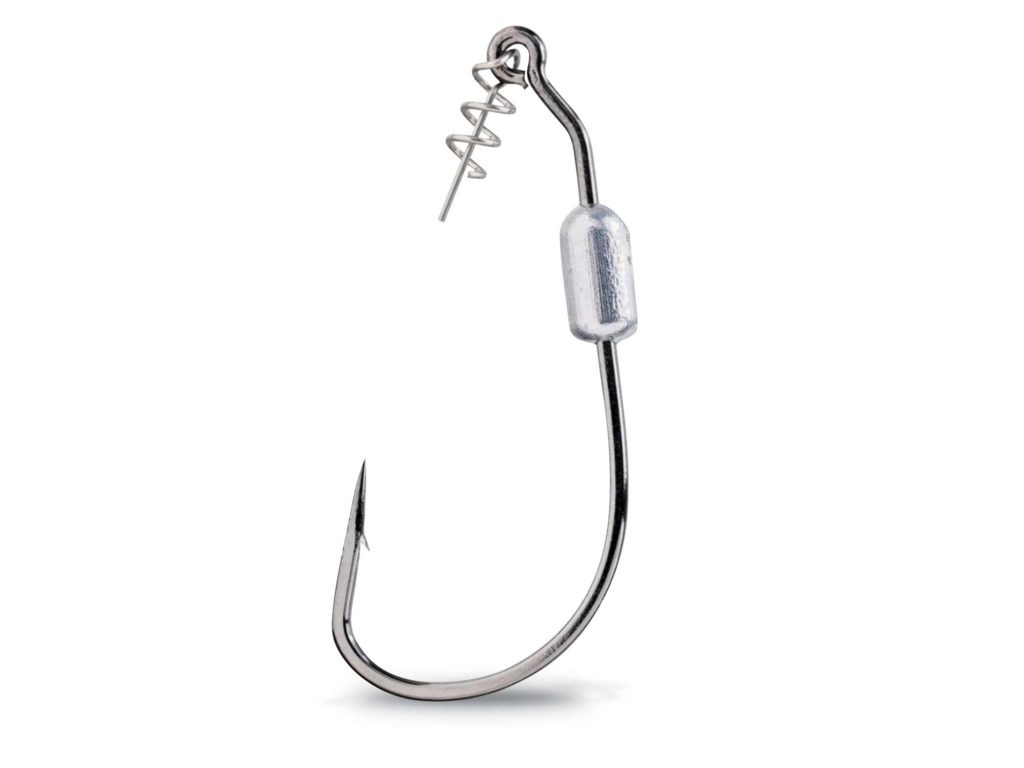
The bait-holder design and weighted shank make it ideal for soft plastics.









